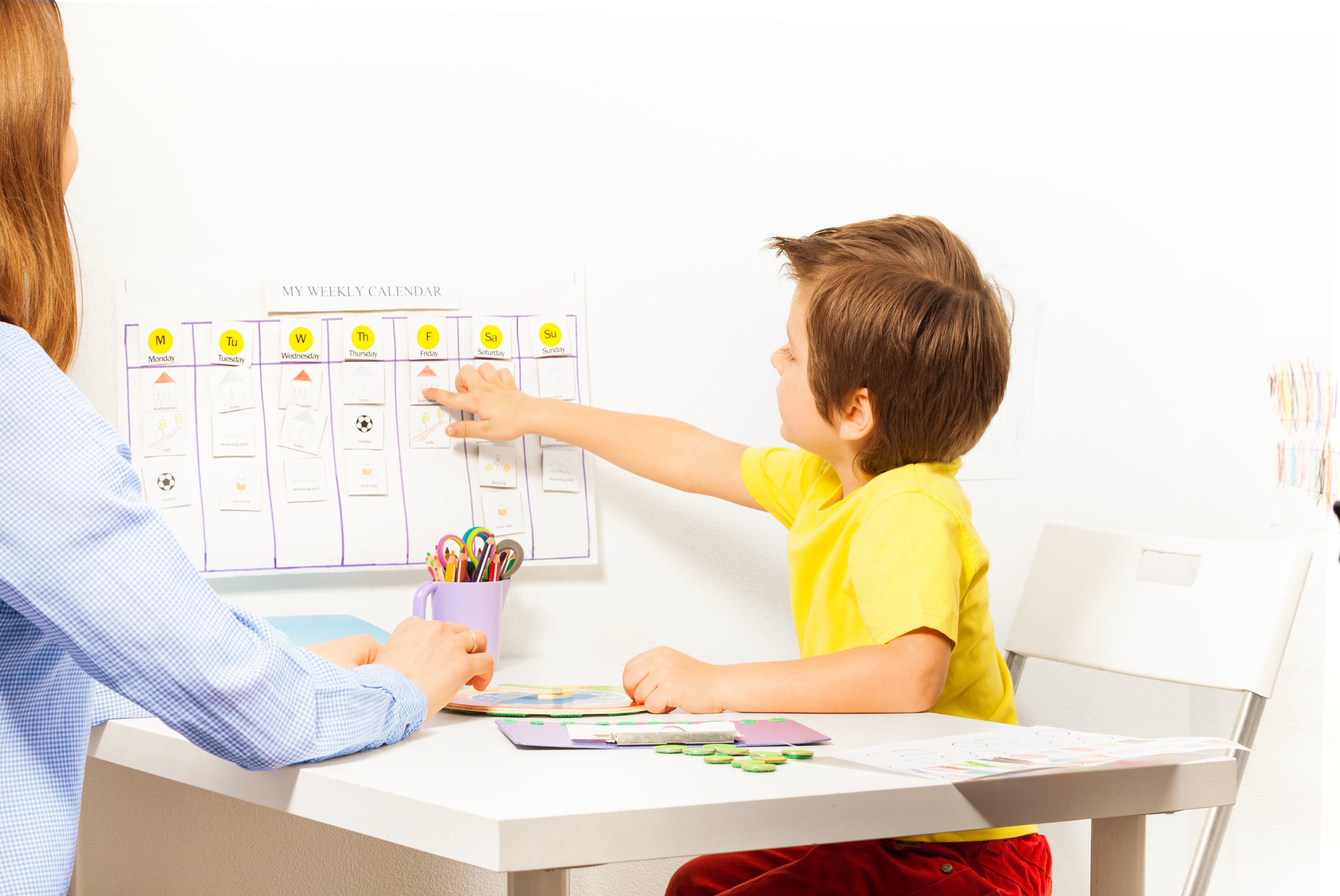The Simple, Stress-Free Way to Make a Homeschool Plan You’ll Actually Use
The best way to plan your homeschool year is the way that works best for your particular homeschool — and like all the rest of homeschooling, it may require some trial and error to find the right balance. That’s why our “perfect” planning method is adaptable as you need it to be: Use the skeleton to make a loose frame for the year, or go all out and plan every week in advance. It’s your homeschool. Make a plan that works for you.
Here’s a dirty little secret about homeschooling: You don’t have to plan out your year to have a great year. In fact, some people wing it completely, while others pick a few big areas to focus on and let their kids’ interests and development guide them through the year. Planning is not an essential part of homeschooling — so if you’re not a planner or the prospect of mapping out your year in advance causes you more stress than pleasure, you are allowed to skip it.
“Homeschooling doesn’t require the same advance planning that running a classroom full of kids does,” explains life coach and homeschool consultant Gillian O’Keefe. “That means you can do it because you want to do it — because it makes your life easier or planning is fun for you.”
Reframing the question from “how do I plan my year?” to “do I want to plan my year?” makes planning an opportunity instead of an obligation. As a long-time planning nerd who is famous for mapping out every class before the first day of school, I appreciate the appeal of a shiny new planner full of color-coded priority lists — but as a homeschool mom, I have found that a looser approach actually works better for the way we learn. Other moms I know skip the planning completely, and their homeschools stay busy and productive all year long. And yes, some moms do keep spreadsheets for every subject for every class.
In other words, the best way to plan your homeschool year is the way that works best for your particular homeschool — and like all the rest of homeschooling, it may require some trial and error to find the right balance. That’s why our “perfect” planning method is adaptable as you need it to be: Use the skeleton to make a loose frame for the year, or go all out and plan every week in advance. It’s your homeschool. Make a plan that works for you.
Set Your Priorities
What’s the big point of this homeschool year? If you had to set two major goals for each of your kids for the coming year, what would they be?
Sometimes, there’s a clear academic mission: Get better at handwriting, learn to read, finish algebra, write a research paper. Other time, it may be something academic-adjacent: Find some social outlets, learn how to be more comfortable taking criticism, get better at focusing on work while it’s happening. Your goals may be even more removed from actual academics: Build confidence, get comfortable trying new things. Before you dive into the questions of history curricula and robotics classes, get a sense of the big picture: What is it that you really want your kids to accomplish this year?
“Homeschoolers can get so focused on the details that they miss the big picture,” explains O’Keefe. “Without goalposts, you don’t know which way to run or when you’re getting close to success — so you never know how well your homeschool is working.”
When we homeschool, we’re making an unconventional choice, and that means we often lack a clear framework for checking our progress: Those grade-by-grade standards list may not match up to what we’re doing in our homeschool — in fact, they may be very different from what we want to do in our homeschools. In that case, though, we’ve got to create our own goals and priorities. Two per student is a good place to start — you need more than one goal so that if you need a break, you can take one to focus on something else, but if you start piling on goals, you lose that clear view of the horizon that well-set priorities can give you.
You can stop there if you want to, but for many of us, it helps to break those big priorities down into bimonthly goals: Come up with six “checkpoint goals” for each of your priorities.
“Think of checkpoint goals as progress checks — if your big goal for third grade is to work on handwriting, what are some steps that get you closer to that goal?” O’Keefe asks.
She suggests mini goals, like writing a letter to a friend or relative, finishing a handwriting workbook, taking notes from a video, and making a grocery list. Checkpoint goals don’t have to be big goals — the key is to pick things that reflect progress for your particular child. And while it may seem like these goals should spread evenly over the year, be aware that they often cluster.
“You may not make any visible progress for a couple of months, and then see several checkpoint goals happen in the same week,” says O’Keefe.
Buy Supplies
When it comes to choosing curriculum, you have to know both what you need and what you’ll actually use each year.
“Before you buy anything, take an honest inventory of your homeschool,” says life coach Colleen Bhasker, who specializes in helping homeschool families. “Be ruthless: Write down all the things that worked great in one column, all the things that worked fine in one column, and all the things that didn’t work in another column. Make a fourth column for things you don’t have but know you need.”
Before you replace something that isn’t working, take some time to figure out why it didn’t work: Were there too many practice problems? Did your kids want more human interaction? Did they tune out during videos? Get feedback from your kids, too: A good question is “what did you like about this program?” which often elicits more useful responses than “what didn’t you like?” (Consider recouping some of the cost by re-selling your used curriculum — one family’s miss is often another’s solid gold hit.)
It’s worth rooting around in your computer downloads (try searching different key terms) and through your bookshelves to make sure you haven’t already bought something for a subject you need to cover this year. Lots of us download stuff willy-nilly only to rediscover it a few years later, after we would have used it, so don’t skip this piece of planning.
If you know what you need, you can start comparison shopping — many homeschool curriculum companies have their biggest sales around Memorial Day and in the early fall, so sign up for mailing lists to get information about discounts and coupon codes. If you need something but haven’t yet figured out what will fulfill that need, set a hard time limit for researching options. With so many choices, you could research curriculum forever, so you want to push yourself to take the next step.
Use your other lists to guide your purchases: If something’s on your worked-great column, it’s usually because the style as well as the content is a good fit for your family, so pay attention to patterns: Maybe your family does well with short, daily lessons or lots of project-based assignments. When you buy new curriculum materials, look for lessons that incorporate the things you already know work well for your family. Similarly, you can learn a lot from curriculum that works fine, even if it’s not life-shakingly inspiring.
“Everything isn’t going to end up being a magic moment,” Bhasker says. “If something is working just fine, it’s probably worth sticking with it.”
Fill Your Days
There are two methods for planning homeschool days, and each has its pros and cons:
Plan your weeks in advance, or keep a record as you go. If you are a planner and finishing your curriculum is important to you, planning things out can be a more comfortable strategy. Start by figuring out how many weeks you want to “do school” this year — for most people, that ends up being somewhere between 28 and 36 weeks. If you’re not sure, block off holidays and vacation time on your calendar, then add two weeks off in the spring and fall to cover sick days, don’t-want-to days, and unexpected fun days that might pop up. Break down your curriculum into units for each week that remains: Depending on how your program is set up, you may do a lesson or more a week, a chapter a week, an experiment a week, etc. You’ll need to spend time with lesson layouts to make this work.
Once you’ve broken down the curriculum by week, all you have to do is pencil it into your calendar, one week at a time. Since you’re already doing the work, now is also a good time to make a list of supplies you’ll need each week: art materials, supplies for experiments, etc. You may also want to make a note of tests and evaluations so that you can schedule those in the best way for your student — you might not want your first class back after the winter holidays to be a big math unit exam, for example.
Keep in mind that your schedule is a guideline, not a law, and that it probably will change, says O’Keefe. “Public school teachers rarely make it through their full syllabus, and you probably won’t either,” O’Keefe says. Be prepared to make adjustments as you go: A Trello board or sticky notes make this a little easier to do, since you can move pieces around instead of erasing or copying and pasting every week.
My personal preferred method involves tracking what you do instead of planning what you will do, but this can feel like flying by the seat of your pants to some people. The method is simple: Instead of plotting out what you’ll do every week, you work through your materials at your own pace, keeping track of what you complete each week. This lets your homeschool develop organically — if you want to spend more time on quadratic equations, there’s no rush to move onto the next thing; if you’re done with bugs after two weeks, you can jump right into your weather unit. There’s no way to fall behind, but you do have to trust that you’ll get where you need to go. This method is more comfortable for experienced homeschoolers, says O’Keefe, because we’ve learned how to trust the process.
If you’re intrigued by this method but not sure you’re ready, try keeping a list as an ancillary to your other planning. At the end of the year, how you feel looking over the list of things you accomplished in your homeschool will be a good indicator of whether this method is for you.
Be vigilant about keeping up with whatever method you choose so that you have a record of your year.
Homeschool planning is as much art as it is science, and your method will ultimately be as individual as your homeschool. “You’re the one doing the work, so make sure the method works for you,” says Bhasker. “It doesn’t matter if it looks good on Pinterest or if it would convince your mom that homeschooling was a good choice, what matters is that it works for your homeschool.”
































A creative learning space is less about actual stuff and more about giving your children space to explore ideas in different ways.